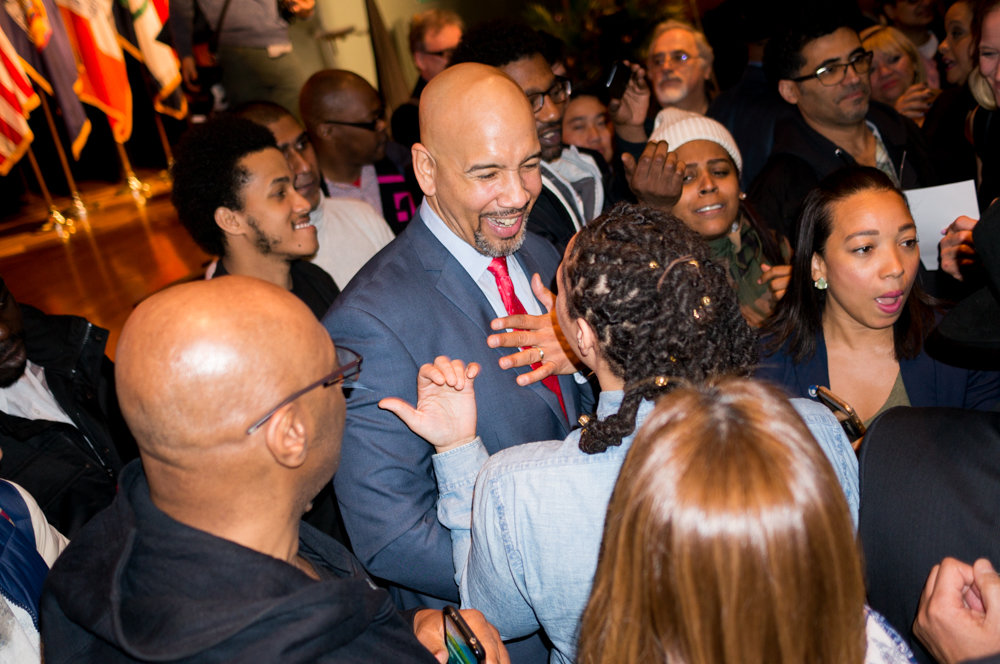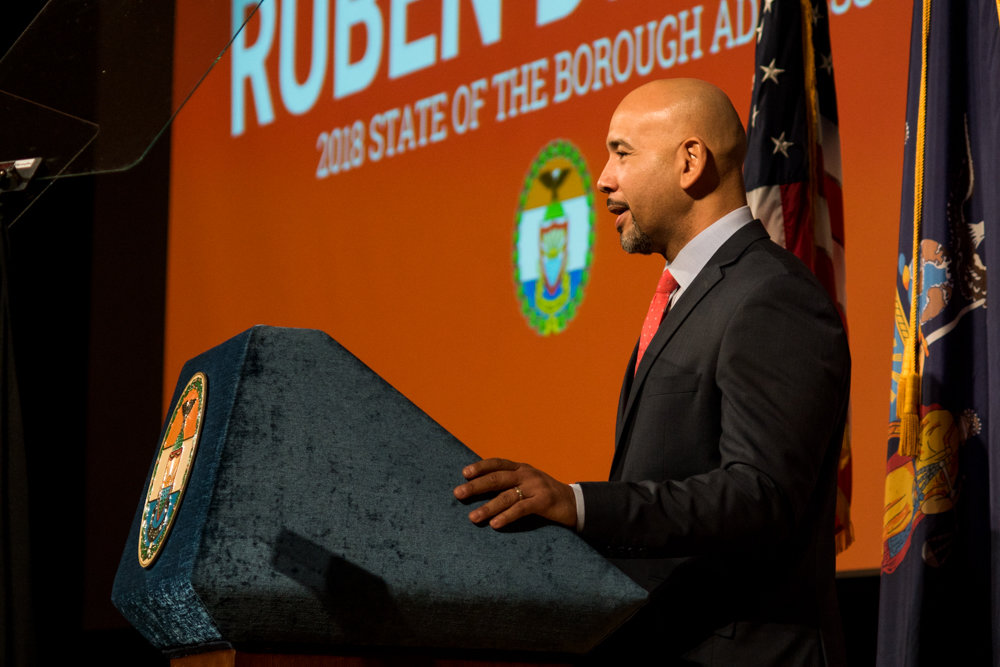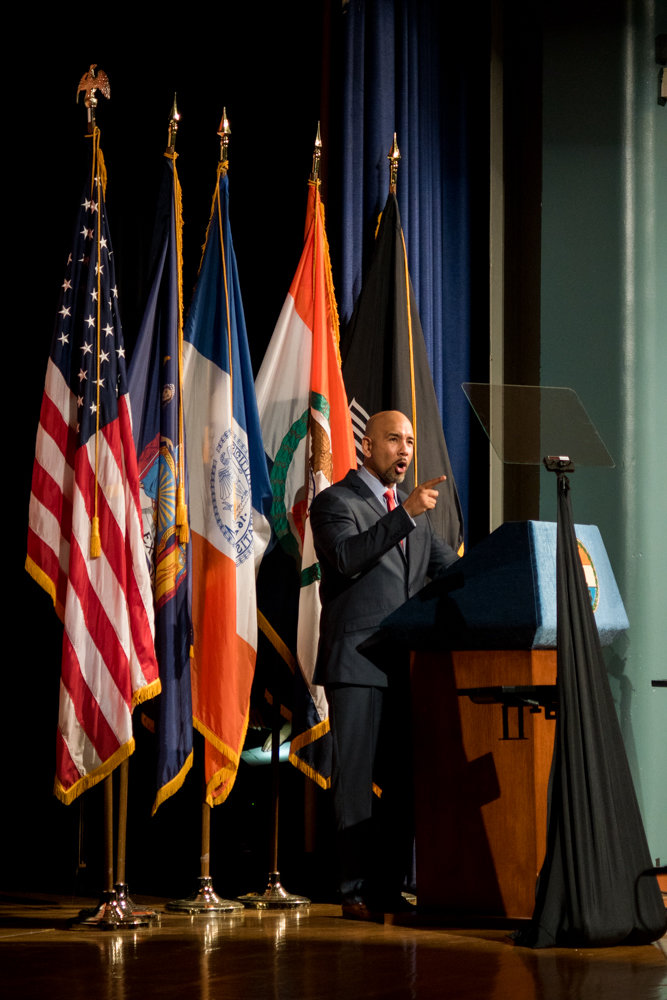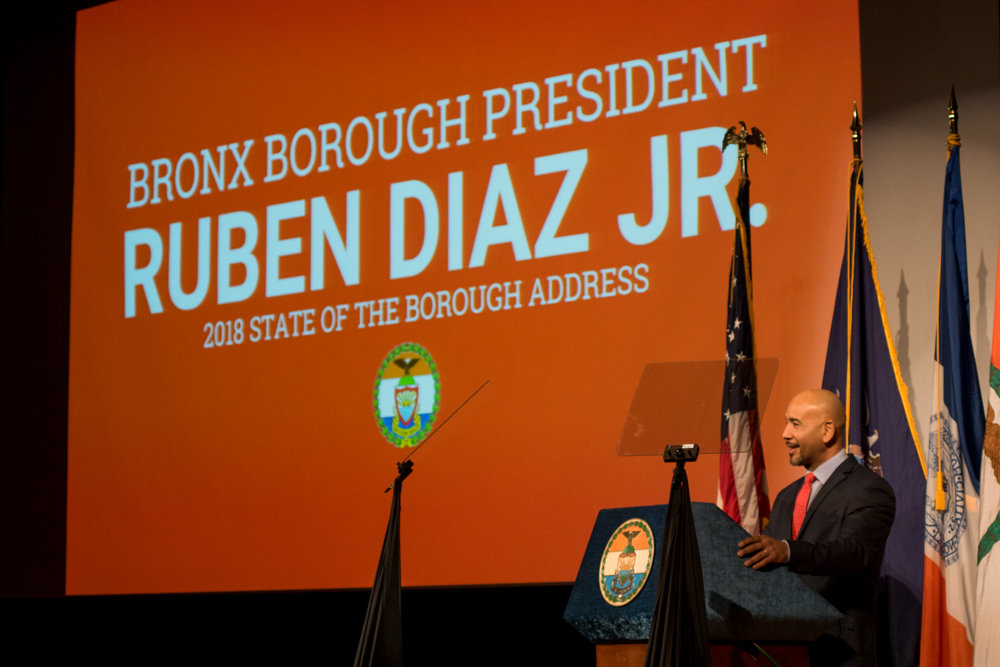Diaz doubles down on youth success, ‘best year yet’
Ruben Diaz Jr., heralded a Bronx that is surging upward and onward on multiple fronts — while also stressing the need for vast improvements on a plethora of others — in his 10th state of the borough address.
The borough president delivered his soaring speech to multiple standing ovations at Health, Education and Research Occupations High School in Mott Haven last week from an audience swollen with political heavyweights, from stalwart incumbents like Assemblyman Jeffrey Dinowitz, to establishment-rattling newcomers like state Sen. Alessandra Biaggi.
While Diaz was generous in praising the borough’s economic prowess and enhanced educational opportunities — especially for young people — he also didn’t hesitate to crack the whip on issues like public housing residents’ deplorable living conditions, the city’s utter failure to fix them, or public transit’s sorry state.
Diaz lauded the Bronx as a cradle of “innovation, entrepreneurship and excellence,” a “diverse and striving borough” home to some 1.4 million residents — a quarter of whom are younger than 18, while 40 percent are born in other countries.
“But our residents are more than simple statistics,” Diaz said. “We are a colorful kaleidoscope,” a motley bunch most of whom are “looking to build a better life,” riding on fervent faith in “the American Dream.”
“What we want is nothing more than a chance to prove it,” Diaz said. “It is government’s responsibility to present us with an opportunity to do just that.”
And government, he said, can do that — by creating new jobs and building new, better housing, for example.
Which is nothing what it’s like for people living in the New York City Housing Authority’s Marble Hill or Fort Independence houses — which makes improving their still “reprehensible state” a glaring priority. To that end, Diaz vowed he, along with local and state lawmakers, are toiling “so that the most vulnerable among us have the opportunity to live in a home that meets the basic standards of dignity.”
But Diaz also cast the spotlight on the borough’s painfully prolonged affordable housing battle for private housing residents. With rent laws set to expire next June — and a newly empowered Democratic state senate majority — Diaz says he’s working with state lawmakers to tackle a slate of initiatives aimed at tipping the scales of justice slightly more in favor of tenants.
That includes closing the so-called preferential rent loophole, as well as enacting legislation on vacancy decontrol, when a rent-stabilized apartment becomes deregulated through a vacancy.
Still, despite some bright spots, Bronx streets can be a terrifying and even lethal place, Diaz said — a fact that became horrifyingly clear last summer with the brutal murder of 15-year-old Lesandro “Junior” Guzman-Feliz.
A group of young men allegedly dragged the teen from a Belmont bodega before stabbing and slashing him to death on the sidewalk outside with knives and machetes in a tragic case of mistaken identity.
“We need to work together to protect our children from the dangers of the streets,” Diaz said, before announcing the founding of “Camp Junior” at Harriman State Park, created through a partnership between the borough president’s office, the Fresh Air Fund, and the state’s parks department. The program is expected to whisk hundreds of kids upstate each summer far from the city’s cramped concrete quarters, while providing camp-like fun packaged inside an anti-violence curriculum.
And, at least according to Diaz, they won’t have to pay a penny to take part.
“Our youth may be 25 percent of the Bronx population, but they are 100 percent of our future,” Diaz said. “We must plan with them in mind.”
Diaz also is focused on what he calls a humane and intelligent fight against crime, even while the last six years have seen less than 100 annual homicides in the borough.
That’s thanks in large part to residents and police working together, an alliance made even stronger by initiatives like the neighborhood coordination officer program — which 50th Precinct commanding officer Emilio Melendez told The Riverdale Press recently has been hugely successful so far.
Drugs, meanwhile, still plague way too many people, Diaz said, which is why he’s committed to doubling down on combating the seemingly invincible opioid scourge. Separately, debate over legalization of recreational marijuana is heating up after Gov. Andrew Cuomo announced it as a prime plank for his agenda this year. But that means ensuring marginalized communities in places like Marble Hill and Kingsbridge Heights reap rewards from the new market is crucial.
Especially after they’ve been disproportionately targeted in law enforcement crackdowns for decades.
And in spite of myriad setbacks, trials and tribulations, the “boogie-down Bronx” actually is thriving, Diaz said, noting he’s overseen a slash in the borough’s unemployment by more than half since he came into office around a decade ago. Of course, the economics of 2009, in the middle of the housing market and banking industry crash, was much different from today.
Still, he believes that’s only the beginning — because “2019 is going to be our best year yet.”













